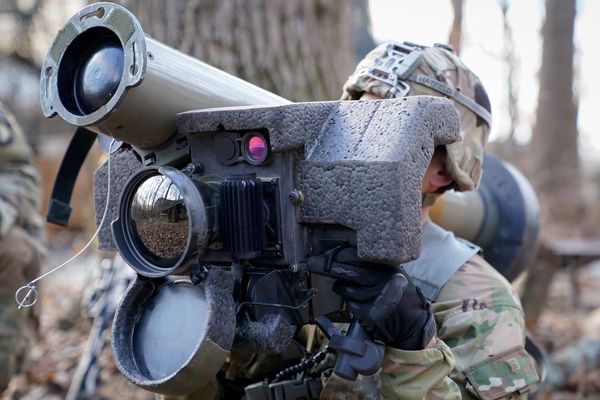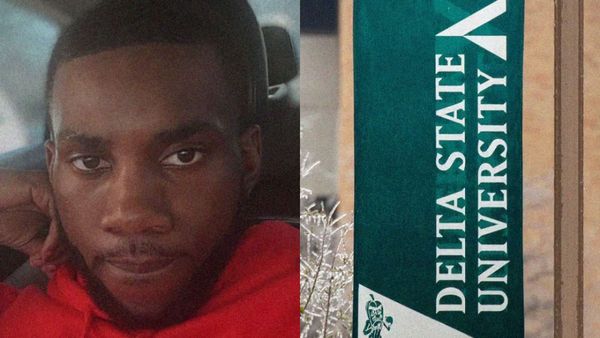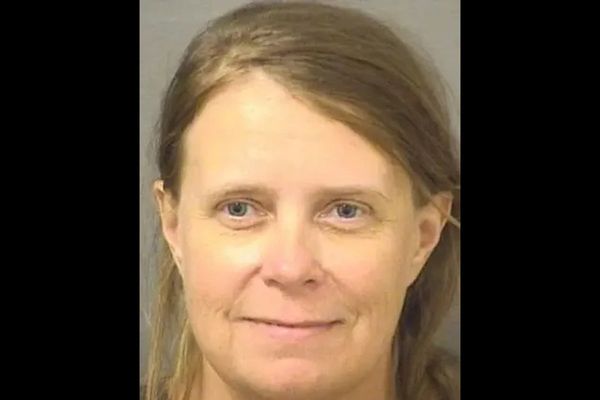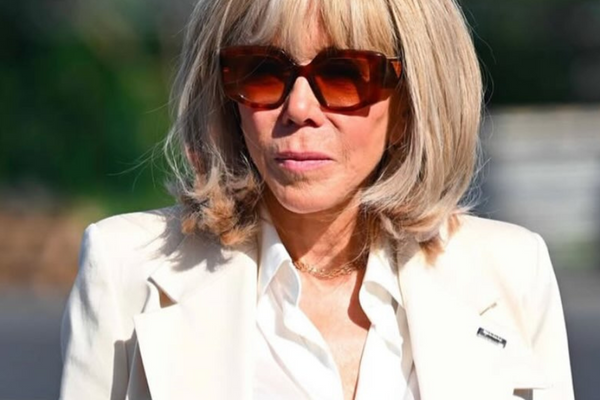
On January 1, Mukesh Chandrakar sent me a link on WhatsApp to a story that he and Nilesh Tripathi had worked on, about the conditions of the schools in Naxal-affected Bastar. Three hours later, he would go missing.
I found out about Mukesh from another journalist friend, who had called me on January 3. He told me Mukesh had been missing for two days. The last call from Mukesh’s phone had been made at 8.28 pm, to his relative Ritesh Chandrakar, who was also missing after having boarded a flight to Delhi on the night of January 2. Mukesh’s brother Yukesh had filed a missing person’s report with the police. He also uploaded a video on Mukesh’s YouTube channel, appealing for help. “My brother is a real hero,” Yukesh Chandrakar said in the video. “I don’t feel like I am his elder brother today. It seems I have lost a child today.”
Hours later, the special team formed by Bijapur police to look into Mukesh’s case found a body in a septic tank in the area near his home, at what was the last location on Mukesh’s phone. Around 5.26 pm, my friend called me to tell me about the body. It wasn’t confirmed as Mukesh’s, but there was a chance that it might be him, my friend told me. I couldn’t believe what I was hearing. We all hoped it wouldn’t be Mukesh.
Two hours later, the body found in the septic tank was confirmed as Mukesh Chandrakar.
My friend and fellow journalist had been brutally beaten and killed. He was 32 years old. The main suspect? Contractor Suresh Chandrakar, who had recently had an extravagant wedding for which he’d used a helicopter and organised Russian dancers. He was also a distant relative of Mukesh’s.
The story that killed Mukesh
On December 19, 2024, Mukesh Chandrakar, along with Nilesh Tripathi, his colleague from the news channel NDTV, travelled to Mutavendi. The two had worked together for 10 years and collaborated on many projects. This time, they were following up on the tragic death of a six-month-old girl who had got caught in a crossfire the previous year as well as landmine deaths in the region. The two of them also reported on the conditions of new schools, the salaries of teachers and the implementation of government schemes in the area.
While on their way to Mutavendi, Mukesh and Nilesh noticed the poor condition of a newly-constructed road and while returning to Bijapur, Nilesh did a report on the road’s condition, highlighting its poor quality. He titled the story “Jahan shaheed huye jawan wahan kyun ho raha hai ghatiya sadak nirman?” (Why is the road quality poor where martyrs died?). The piece was aired on December 24, 2024, and caught public attention. Within a day, the government took note and ordered an inquiry on the construction of the road that goes into Naxal areas.
The decision to do a story on the road was a spur-of-the-moment one. “The road was constructed from Ganglur to Nelasnar and we went up to Hiroli as we had to go to Mutvendi. The road condition was really bad, so I told Mukesh that we would do the story on our way back to Bijapur. Basically it was an accidental story as we went to Mutvendi to cover some other stories,” recalled Nilesh.
It was only when they looked into the matter at the collector’s office, they learnt Suresh Chandrakar was the contractor. Off the record, authorities in the office told them that he did “very bad work with roads”.
After the story was aired, Mukesh and Nilesh did not receive any threats. In fact, Mukesh mentioned to Nilesh that he had been receiving calls of praise from people.
“On the evening of January 1, Mukesh and I had a long conversation. Both of our stories – one on road construction and the other on a school – had made an impact. He also mentioned that he had a lead on another road in the Naxal stronghold of Pamed. I told him we would work on the story for January 26,” recalled Nilesh. “I’ve known him for 10 years, and we’ve collaborated on many projects. At that moment, I had no idea that it would be our last story together, or that I was speaking to him for the final time.”







‘Kaise ho, Dada?’
Mukesh and I were in regular contact. He sent me his stories and helped me whenever I reached out to him. “Kaise ho, Dada?” he’d say when he picked up my call. Whether I asked for contact details, a first information report (FIR), or a press release, he would reply, “Abhi lo, Dada.” He was always willing to lend a hand to fellow journalists.
From reporting on killings of innocent tribals by police and Naxals, corruption in infrastructure projects to the issue of journalists’ safety and security, Mukesh had reported extensively on a range of topics from the interiors of Bastar.
I first interacted with Mukesh because he and his elder brother Yukesh were part of the eight-member delegation (of which six were journalists) led by journalist Ganesh Mishra, which successfully secured the release of Central Reserve Police Force (CRPF) trooper Rakeshwar Singh Manhas from Naxals in April 2021. I was doing a story on the delegation that had secured the release.
Mukesh shared with me the harsh reality of being a journalist in Bastar. “Ninety-five percent of journalists in Bastar are non-salaried. Because of this pathetic system, some work with authorities, some as contractors, but it is not their fault. They don’t have any options,” he’d told me. “I earn between Rs 250 and Rs 2,500 per story, and Rs 2,500 is only if it’s a ‘special story’,” he said, adding that it was “very challenging” to work in a conflict zone where as journalists, they have to navigate threats from both the police and Maoists. “Despite that, we work. But what bothers us is not being paid,” he’d told me.
Asking tough questions
Salim Shaikh, a ground reporter and friend of Mukesh’s from Sukma in Bastar, had known Mukesh for more than 10 years. They met when the controversial police officer SRP Kalluri was the inspector general of Bastar. “It was extremely risky to report on government and police misconduct. Despite the dangers, Mukesh stood out as one of the very few journalists who boldly spoke out against these wrongdoings. He was a staunch anti-establishment journalist who consistently focused on stories that served the public interest,” he said, adding that Mukesh had a network that included villagers, Naxals and the police, which often gave him access to vital information. “In fact, many of us learned to ask tough questions without fear of authority, following Mukesh and Yukesh’s lead,” Salim told me. He said Mukesh was “always in the spotlight” because of the stories he did. “He often had arguments with officials due to his exposés. He was a brave journalist and inspired many other ground reporters,” said Salim.
Multiple journalists told me that Mukesh had previously reported on substandard work by contractors, which had led to them nursing a deep grudge against Mukesh. The circle of contractors in Bastar is a small one and they get lucrative infrastructure projects in Naxal-affected areas. The general belief is that officials and politicians get a cut of this deal in exchange for the contractor being able to carry out his scam by using substandard material.
Journalist Prabhat Singh said, “Suresh Chandrakar is one of the contractors who have direct or indirect involvement in every road contract in remote areas of Bastar. These contractors do substandard work and there is nobody deep inside the jungles to check the quality of work. When reporters expose such low quality work these contractors get affected.” Prabhat and other journalists in Bastar believe Suresh Chandrakar thought Nilesh’s story was Mukesh’s work because he’d done such stories in the past.
“Mukesh was one journalist who has reported many times about the bad condition of roads. Suresh Chandrakar, enraged by Mukesh’s consistent exposés on poor contractor work, likely believed that Mukesh was responsible for the critical story on the Gangalur-Nelasnar road, even though it was actually Nilesh who had reported it,” speculated Prabhat.
Mukesh was two years old when he lost his father. The responsibility of keeping the family going fell on his mother, Kaushalya, who was an anganwadi worker. “I remember once, while we were roaming in the jungle, he told me how he used to collect mahua and tamarind,” said Ranu, while telling me stories of Mukesh. “At first, I thought it was just a fun activity for him, but then he told me he’d started doing this out of necessity. His mother worked as an anganwadi worker, earning only Rs 300 a day, so collecting forest produce was a source of income for them. Despite the hardships, she raised them well.” In 2009, Kaushalya succumbed to cancer. Mukesh was just 17 years old. “From then on, both brothers survived on their own, eventually carving out successful careers in journalism,” said Ranu.
As per the police investigation, it seems Ritesh Chandrakar was the one who invited Mukesh over on the night he disappeared, on January 1. Ritesh is Suresh Chandrakar’s younger brother. In addition to being relatives, Mukesh and Ritesh were also on good terms.In 2019, Mukesh and Ritesh went to Uttarakhand for a trip. They sometimes used to play badminton together in the place where Mukesh was murdered. Evidently, Mukesh didn’t suspect any foul play and agreed to meet Ritesh.
In a press release issued after they found Mukesh’s body, the Bijapur police stated, “On the night of January 1, 2025, Ritesh Chandrakar spoke with Mukesh Chandrakar over the phone and invited him to dinner at Suresh Chandrakar’s property in the Chattan Para area of Bijapur. Mukesh attended the dinner, where an argument broke out between them. During the argument, Ritesh confronted Mukesh, questioning why, despite being a relative, he caused problems in their work instead of supporting their work.”
Ritesh and Mahendra Ramteke, who worked for Suresh as a supervisor, assaulted Mukesh with iron rods on his head, stomach, back and chest. Mukesh was killed on the spot. Ritesh and Mahendra Ramteke put Mukesh’s body in the nearby septic tank. Later, another brother, Dinesh Chandrakar, supervised the cementing of the tank.
The police stated that Mukesh’s murder was premeditated and the mastermind was Suresh Chandrakar, who was ostensibly in Jagdalpur at the time of Mukesh’s murder. After killing Mukesh, Ritesh informed Suresh and Dinesh who were in Jagdalpur. He then left for Bodli with Ramteke where he was joined by Suresh and Dinesh. They disposed of Mukesh’s phone and the iron rods used to kill him at different places.
All the three Chandrakar brothers, Suresh, Ritesh and Dinesh, and Mahendra Ramteke have since been arrested. The post mortem report revealed how mercilessly they’d brutalised Mukesh. His skull had 15 fractures, five ribs were broken, his liver was in four parts, his neck was broken and his heart burst. Ultimately, Mukesh had to be identified by the tattoo on his hand.
Remembering a brave journalist
However, this horrible death is not how Mukesh should be remembered. “Mukesh himself was a story. He had faced so many challenges in his life,” said Mukesh’s friend and fellow journalist Ranu Tiwari.
Mukesh was two years old when he lost his father. The responsibility of keeping the family going fell on his mother, Kaushalya, who was an anganwadi worker. “I remember once, while we were roaming in the jungle, he told me how he used to collect mahua and tamarind,” said Ranu, while telling me stories of Mukesh. “At first, I thought it was just a fun activity for him, but then he told me he’d started doing this out of necessity. His mother worked as an anganwadi worker, earning only Rs 300 a day, so collecting forest produce was a source of income for them. Despite the hardships, she raised them well.”
In 2009, Kaushalya succumbed to cancer. Mukesh was just 17 years old. “From then on, both brothers survived on their own, eventually carving out successful careers in journalism,” said Ranu.
Prabhat Singh, another friend and fellow journalist, added more to this story. “Mukesh and Yukesh used to live in Basguda with their mother until the Salwa Judum movement came about in 2005. The moment became aggressive and many innocent people were forced to leave their homes and were forcefully shifted to Judum camps, protected by the police. Mukesh’s family first lived in Basaguda and because of the rising conflict, shifted to a camp in Awapalli. He did his schooling from Adarsh Vidyalay then followed the footsteps of his elder brother Yukesh and got into journalism at a very young age of 20-21 years,” Prabhat said.
Ranu said Mukesh entered journalism by accompanying Yukesh on assignments and learning on the job. “He was an outstanding journalist, particularly known for his ground reports,” Ranu said of Mukesh. “He worked as a stringer for outlets like Sahara Samay, Bansal News and News 18, but in 2021, he took a bold step and launched his own news channel, Bastar Junction.” Mukesh’s channel had in-depth, on-ground reporting and quickly gained a following.
Ranu’s voice broke with emotion as he recalled their times together. “Whenever I visited Bijapur, I would stay with Mukesh. I often joked that his place was my ‘Chandrakar Dharamshala.’ In fact, every story I did in Bijapur was with Mukesh by my side,” he said.
Once, the two of them travelled on motorcycles to Abhujmad, near the banks of the Indravati river. “For nearly four kilometres, he spoke non-stop, providing in-depth coverage. His ability to provide such rich details while reporting was incredible,” remembered Ranu.
Mukesh’s life reflects the struggle of journalists in Bastar and his untimely death highlights the risks they navigate in their pursuit of truth. His dedication to his work and the challenges he faced should serve as a powerful reminder that the real sacrifices are made by journalists who are rarely seen, who put their lives on the line so that we have news to report from the frontlines.
In times of misinformation, you need news you can trust. We’ve got you covered. Subscribe to Newslaundry and power our work.
Newslaundry is a reader-supported, ad-free, independent news outlet based out of New Delhi. Support their journalism, here.







